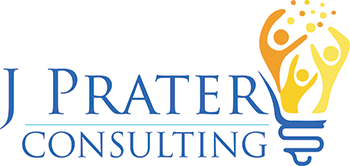Psychological Safety
In an earlier post, I talked about the Bystander Effect and how it could be impacting your organization.
You may have a culture problem – where bringing up problems is considered taboo.
On a deeper level, an unwillingness to identify problems, speak up, and work towards a solution can be a signal of something much more troubling, a lack of psychological safety.
What is psychological safety? We often associate the term with the willingness to speak up, make mistakes and be corrected in a constructive way. The OPPOSITE of psychological safety is an environment built on shame, collective peer pressure, hiding mistakes for fear of retaliation, or where the blame game reins supreme.
Do you remember the Arcade Game “Whack a Mole”? It used to be my favorite. Something about taking that massive mallet and hitting all the moles that popped up was strangely soothing.
We can get in “whack a mole” mode in our businesses. Problem comes up? In a high stakes environment, we may be more concerned about hitting the mole than looking at the bigger picture.
Sure, problems need to be solved immediately and efficiently. We have to be looking into the context or systematic nature of the problem, or else, when it comes up again, we are focusing on getting rid of the problem at hand rather than the systematic issues that led to the problem.
Worse still, faced with many problems, we may sink into blame. Rather than looking at problems with a solution mindset, it is tempting to get into “problem solving mode”.
If emotions are high, which they so often are in difficult situations, the result may be an environment where people are more likely to hide future problems for fear of negative reactions and retaliation.
So.. how does an organization create psychological safety?
Accept the individual approaches to problems. I once had a micromanaging manager. They were notorious for being specific about everything – I would secretly count how many things that they would ask me to change in a project. Font size, colors, margins, etc. It was an unhealthy dynamic for me – as a perfectionist, I tended to worry obsessively about what would be “wrong” with my work.
Have a firm understanding about what is mission critical and what is not. If it is a core element that is critical to the success of the project or satisfaction of the client, by all means, fix it. Yet, if it is a matter of personal preference, understand that challenging may lead to walls and barriers being built.
Avoid the blame game. It’s human tendency- we want to find fault. When something has gone wrong, inevitably, we seek to pass the buck, justifying that in fact our actions did not lead to the mistake.
Stop. The. Blame. Game.
Blame is just the hot potato, and while you seek to throw it away, you are likely damaging another’s reputation, AND NOT ACTUALLY SOLVING THE PROBLEM. Instigating the blame game may feel good for now (because who wants to accept part of a problem?), but it ultimately creates an environment where mistakes are hidden to avoid ridicule or blame.
Approach mistakes responsibility. Eventually, someone is going to drop the ball. Mistakes will be made. How you handle it makes all the difference.
Look at mistakes as a chance for learning and growth.
Should there be consequences for mistakes? In some cases, yes. Blatant disregard for a process or performance problems need to be addressed and dealt with.
However, the mistake may have been because of a faulty process or system. In this case, don’t punish the person, look at it as an opportunity to fix the problem so that solutions are found in the future.
While psychological safety is a “buzz word” these days, it’s really hard to get it right. It’s not about denying the truth, letting others always get their way, or being a door mat. Rather, psychological safety is the space that encourages dissenting opinions, fosters healthy dialogue, and ultimately creates a healthy business culture.





